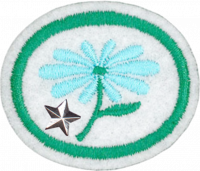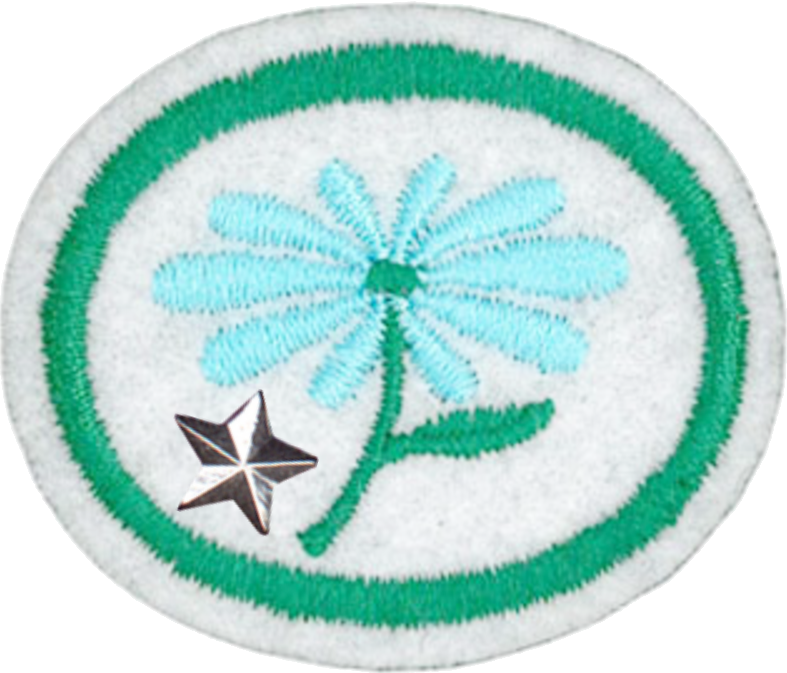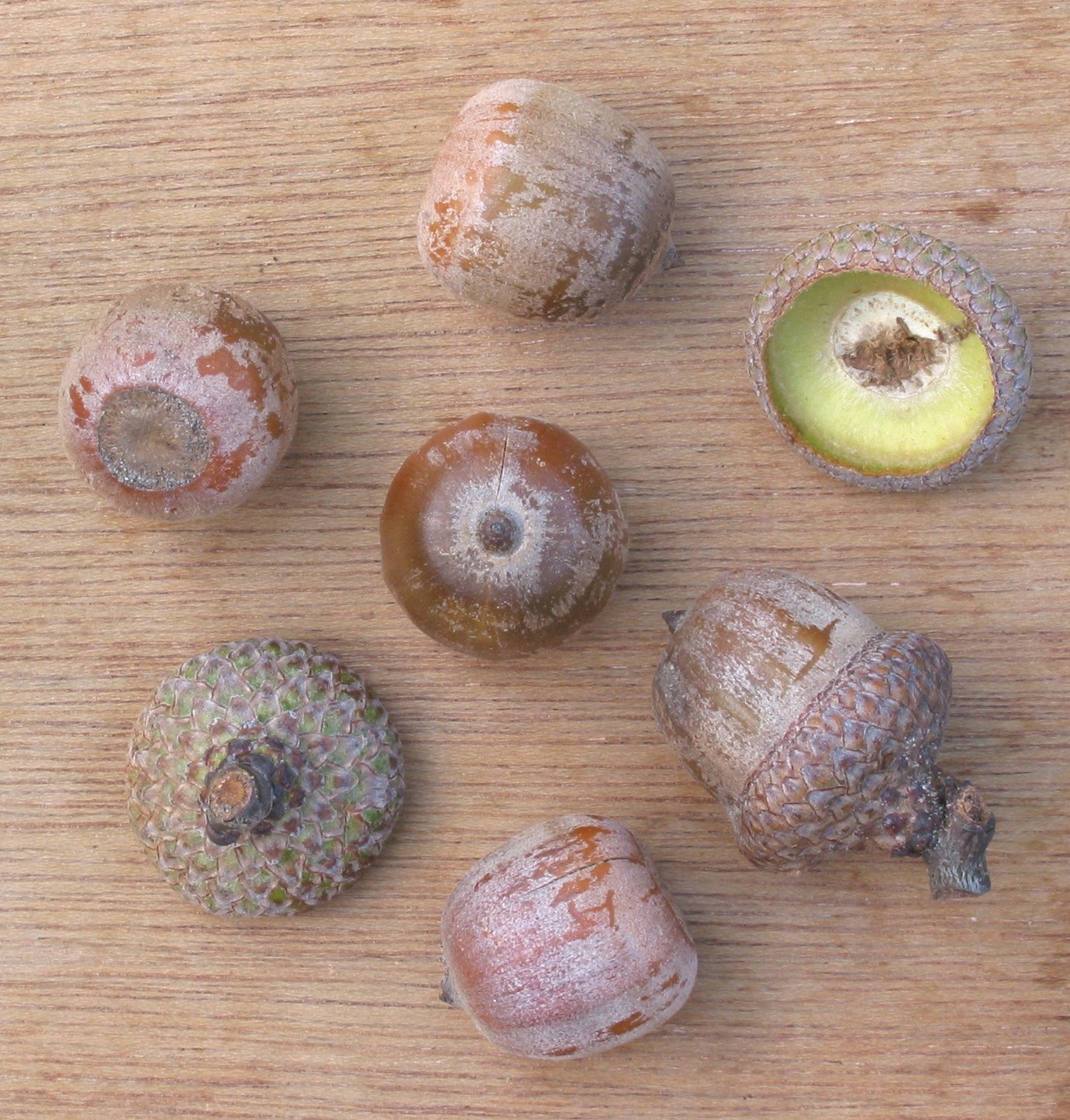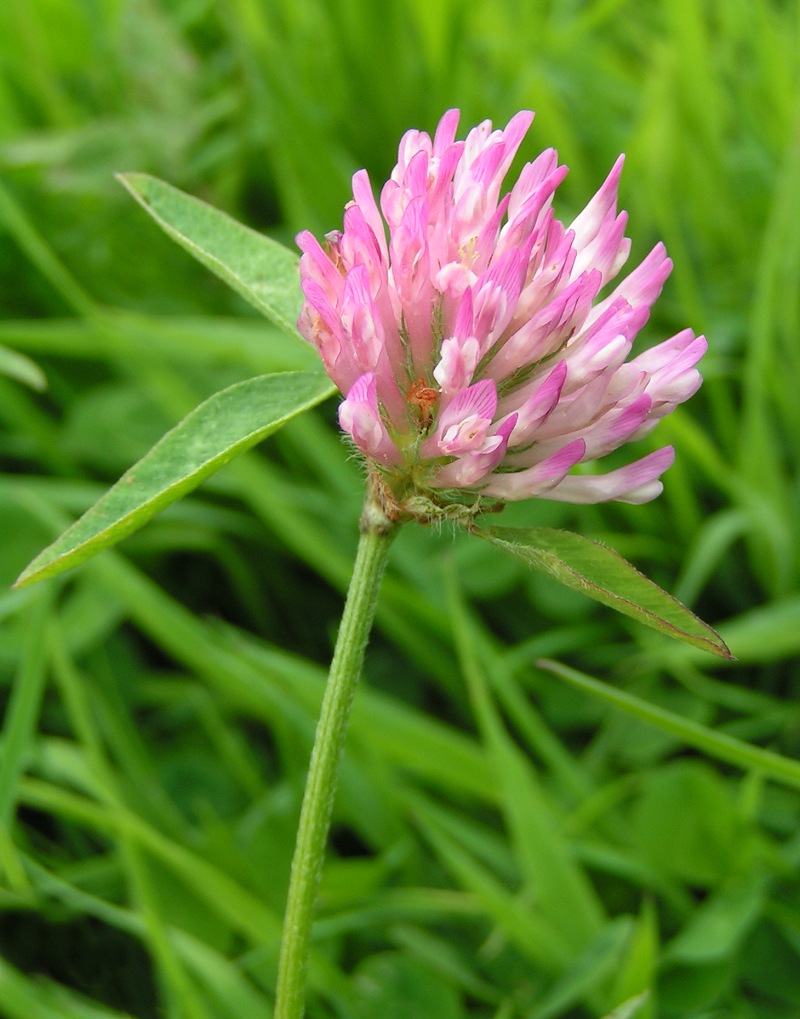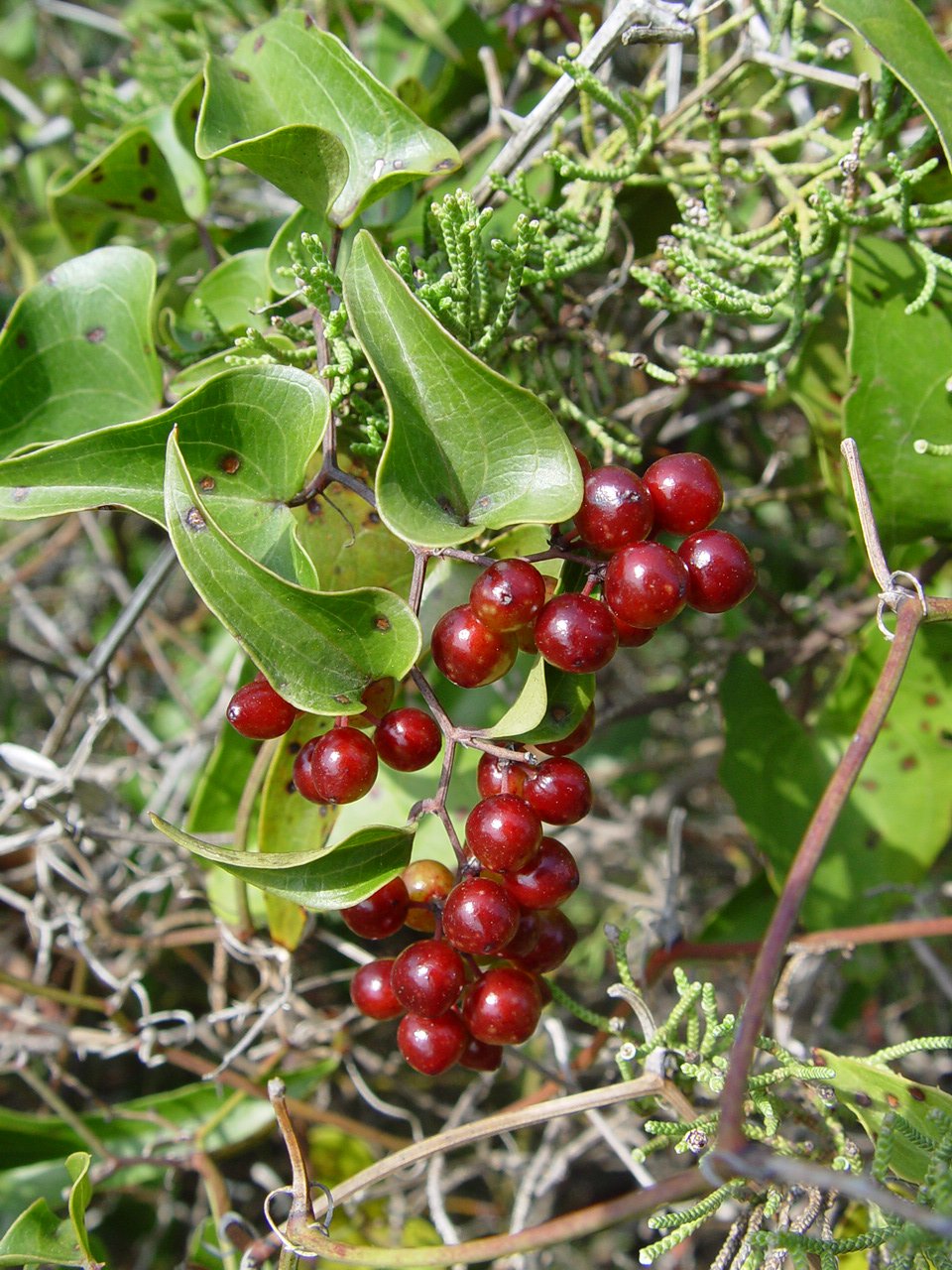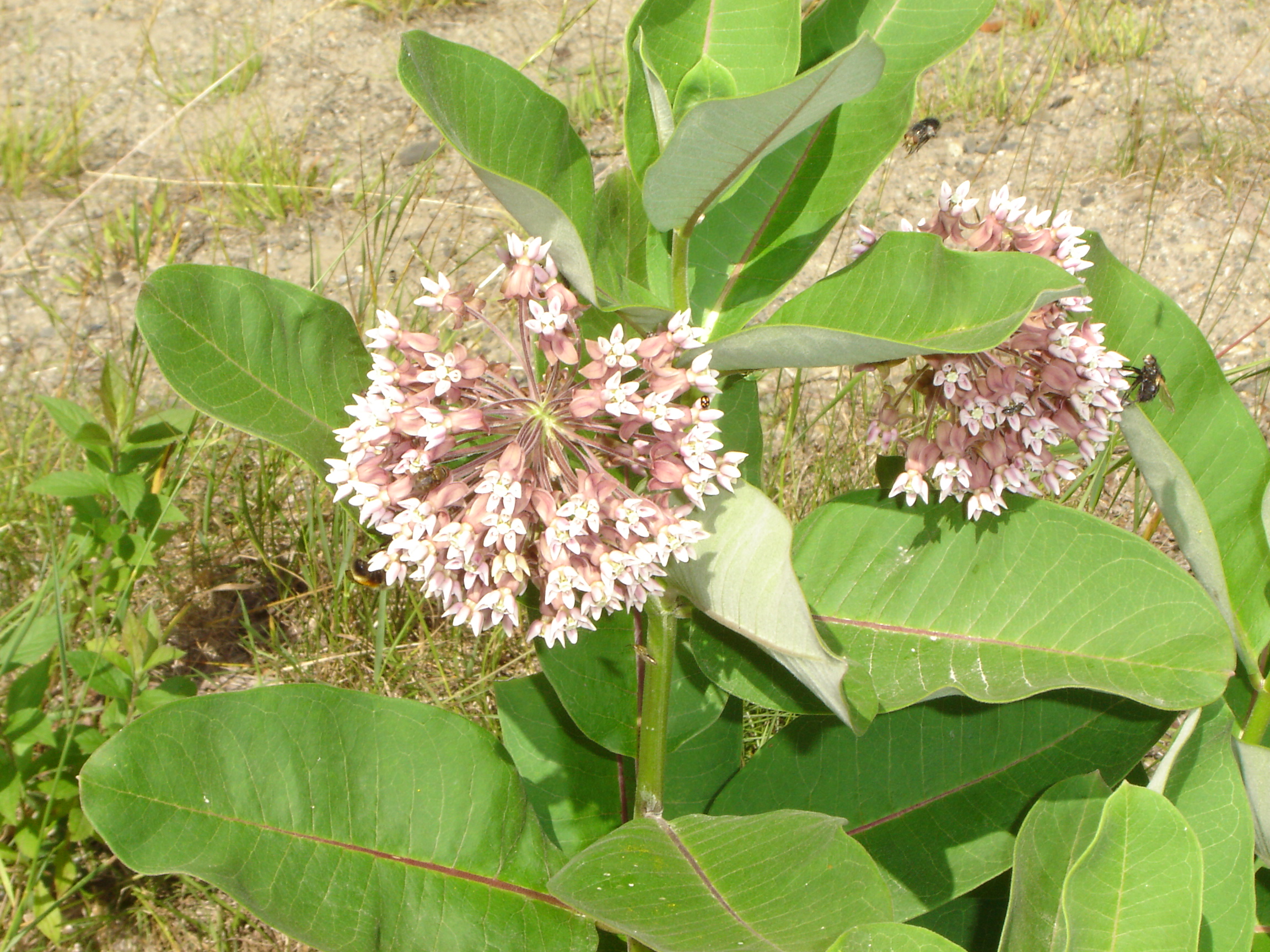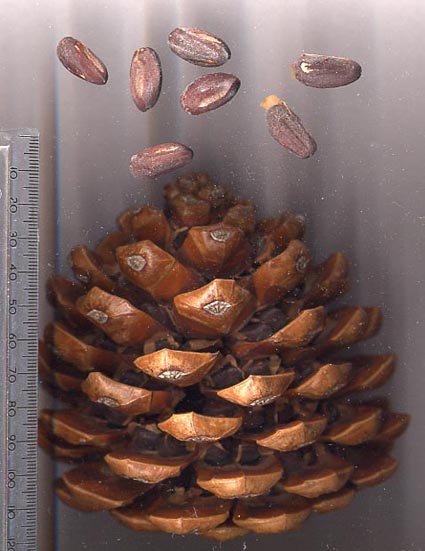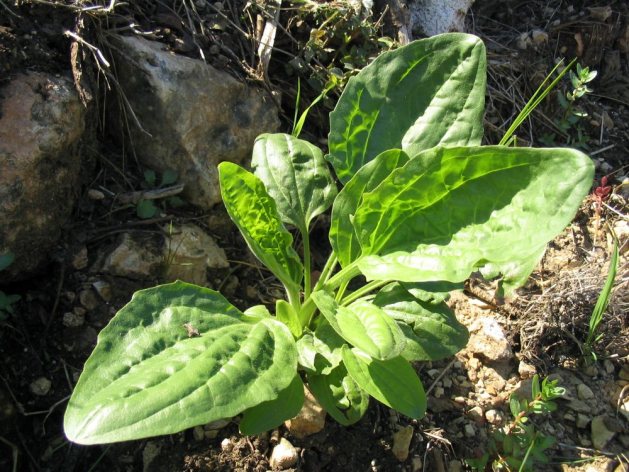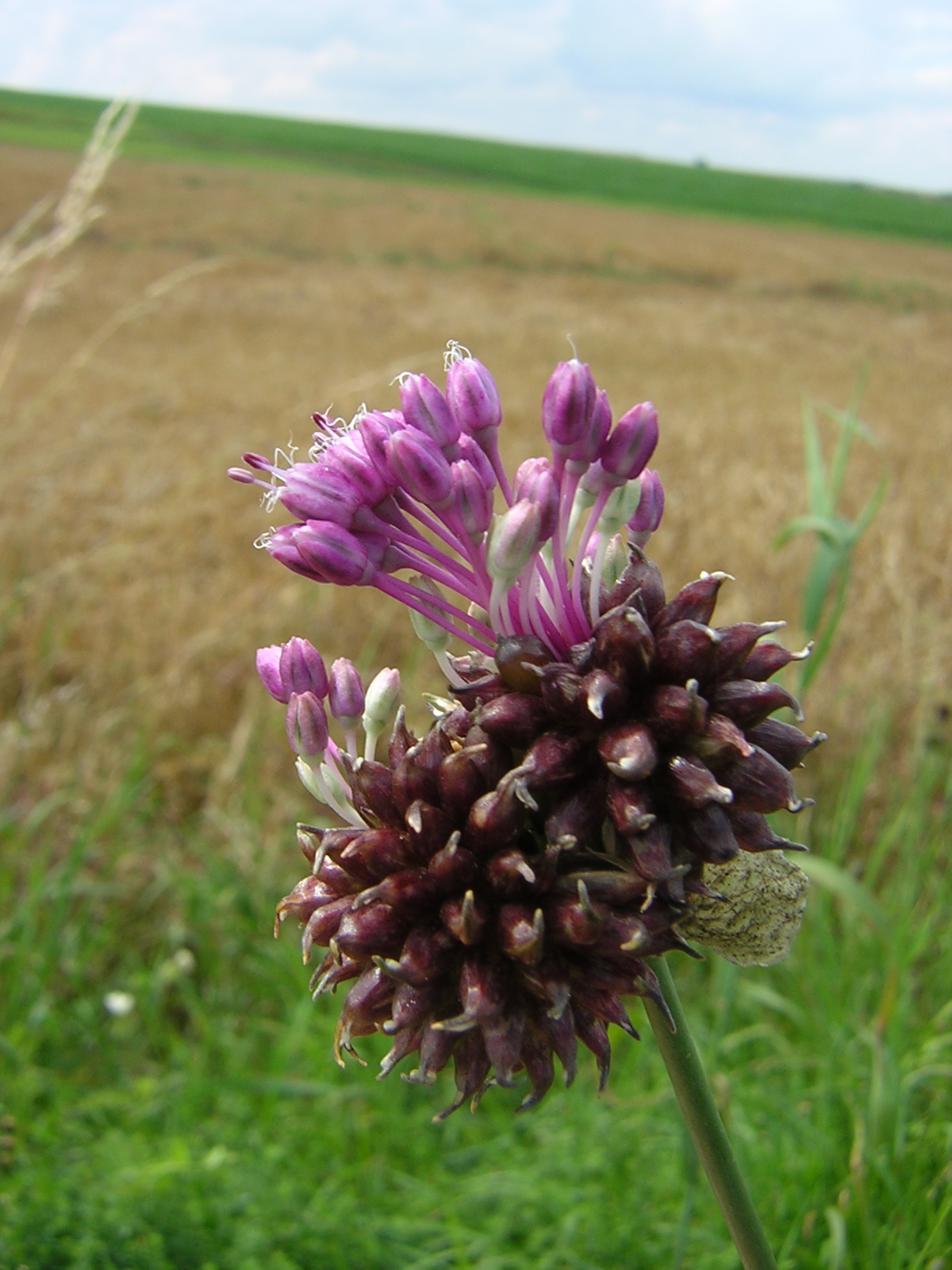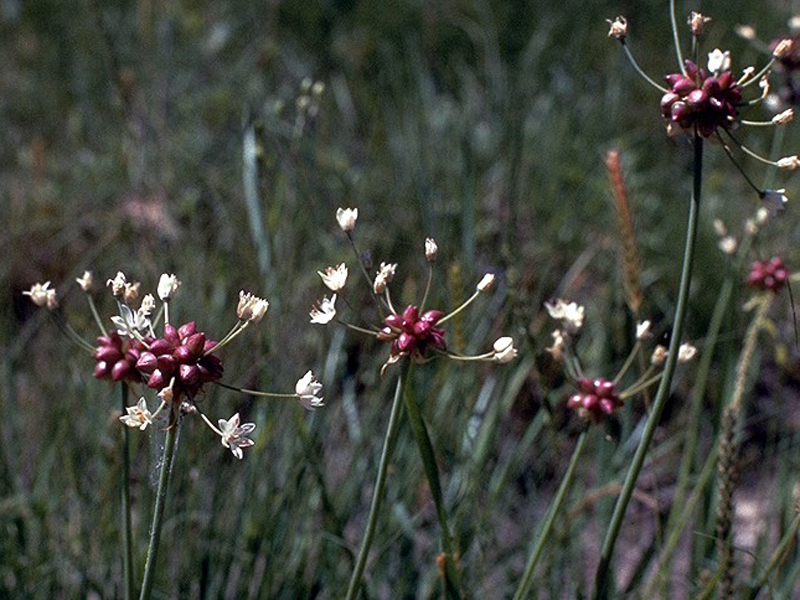Difference between revisions of "AY Honors/Flowers - Advanced/Answer Key/es"
(Created page with "</noinclude> {{honor_desc |stage=00 |honorname=Flores - Avanzado |skill=3 |year=1949 |category=Estudio de la naturaleza |authority=Asociación General |insignia=Flowers_Advanc...") |
(Updating to match new version of source page) |
||
| (45 intermediate revisions by 2 users not shown) | |||
| Line 1: | Line 1: | ||
| − | + | {{HonorSubpage}} | |
| − | |||
| − | {{ | ||
| − | |||
| − | |||
| − | |||
| − | |||
| − | |||
| − | |||
| − | |||
| − | }} | ||
| − | |||
| − | |||
<section begin="Body" /> | <section begin="Body" /> | ||
{{ansreq|page={{#titleparts:{{PAGENAME}}|2|1}}|num=1}} | {{ansreq|page={{#titleparts:{{PAGENAME}}|2|1}}|num=1}} | ||
<noinclude></noinclude> | <noinclude></noinclude> | ||
| − | <!-- | + | <!-- 1. Tener la especialidad de Flores. --> |
| − | {{honor_prerequisite| | + | {{honor_prerequisite|displayname=Flores|honor=Flowers}} |
<noinclude></noinclude> | <noinclude></noinclude> | ||
{{CloseReq}} <!-- 1 --> | {{CloseReq}} <!-- 1 --> | ||
{{ansreq|page={{#titleparts:{{PAGENAME}}|2|1}}|num=2}} | {{ansreq|page={{#titleparts:{{PAGENAME}}|2|1}}|num=2}} | ||
<noinclude></noinclude> | <noinclude></noinclude> | ||
| − | <!-- | + | <!-- 2. Fotografiar, coleccionar fotos o hacer un bosquejo de 75 especies de flores. Hacer un álbum de éstas y etiquetar correctamente cada flor. --> |
| − | |||
| − | + | {{clear}} | |
| − | + | {{clear}} | |
| − | + | {{clear}} | |
| − | + | {{clear}} | |
<noinclude></noinclude> | <noinclude></noinclude> | ||
| Line 36: | Line 23: | ||
{{ansreq|page={{#titleparts:{{PAGENAME}}|2|1}}|num=3}} | {{ansreq|page={{#titleparts:{{PAGENAME}}|2|1}}|num=3}} | ||
<noinclude></noinclude> | <noinclude></noinclude> | ||
| − | <!-- | + | <!-- 3. Dar las características distintivas de las flores de cada una de las 12 familias de plantas comunes. --> |
| − | {{: | + | {{:AY Honors/Flower families/es}} |
<noinclude></noinclude> | <noinclude></noinclude> | ||
| Line 43: | Line 30: | ||
{{ansreq|page={{#titleparts:{{PAGENAME}}|2|1}}|num=4}} | {{ansreq|page={{#titleparts:{{PAGENAME}}|2|1}}|num=4}} | ||
<noinclude></noinclude> | <noinclude></noinclude> | ||
| − | <!-- | + | <!-- 4. Demostrar la capacidad de utilizar claves de las plantas en género y especie. --> |
| − | |||
| − | + | {{clear}} | |
| − | + | {{clear}} | |
| − | + | {{clear}} | |
| − | + | {{clear}} | |
<noinclude></noinclude> | <noinclude></noinclude> | ||
| Line 58: | Line 44: | ||
{{ansreq|page={{#titleparts:{{PAGENAME}}|2|1}}|num=5}} | {{ansreq|page={{#titleparts:{{PAGENAME}}|2|1}}|num=5}} | ||
<noinclude></noinclude> | <noinclude></noinclude> | ||
| − | <!-- | + | <!-- 5. Mencionar la diferencia entre flores perfectas e imperfectas. ¿Qué se entiende por flores con pistilo y con estaminífero? Dar un ejemplo de plantas monoico y dioico. Decir la diferencia entre monocotiledón y dicotiledón. --> |
| − | |||
| − | |||
| − | + | {{clear}} | |
| − | |||
| − | |||
| − | |||
| − | |||
| − | |||
| − | + | {{clear}} | |
| − | + | {{clear}} | |
| − | + | {{clear}} | |
| − | |||
| − | |||
| − | |||
<noinclude></noinclude> | <noinclude></noinclude> | ||
| Line 82: | Line 58: | ||
{{ansreq|page={{#titleparts:{{PAGENAME}}|2|1}}|num=6}} | {{ansreq|page={{#titleparts:{{PAGENAME}}|2|1}}|num=6}} | ||
<noinclude></noinclude> | <noinclude></noinclude> | ||
| − | <!-- | + | <!-- 6. De la Biblia, señalar dos lecciones espirituales en las que los escritores utilizan las flores para las ilustraciones. --> |
| − | |||
| − | |||
| − | + | {{clear}} | |
| − | |||
<noinclude></noinclude> | <noinclude></noinclude> | ||
| Line 93: | Line 66: | ||
{{ansreq|page={{#titleparts:{{PAGENAME}}|2|1}}|num=7}} | {{ansreq|page={{#titleparts:{{PAGENAME}}|2|1}}|num=7}} | ||
<noinclude></noinclude> | <noinclude></noinclude> | ||
| − | <!-- | + | <!-- 7. Nombrar y decir ocho plantas venenosas, señalando la parte de la planta que es venenosa. --> |
| − | |||
| − | |||
| − | |||
| − | |||
| − | |||
| − | |||
| − | |||
| − | |||
| − | |||
| − | |||
| − | + | {{clear}} | |
| − | {{ | ||
| − | |||
| − | |||
| − | |||
| − | |||
| − | |||
| − | + | {{clear}} | |
| − | + | {{clear}} | |
| − | |||
| − | |||
| − | }} | ||
| − | + | {{clear}} | |
| − | {{ | ||
| − | |||
| − | |||
| − | |||
| − | |||
| − | |||
| − | |||
| − | |||
| − | }} | ||
| − | + | {{clear}} | |
| − | {{ | ||
| − | |||
| − | |||
| − | |||
| − | |||
| − | |||
| − | |||
| − | |||
| − | }} | ||
| − | + | {{clear}} | |
| − | {{ | ||
| − | |||
| − | |||
| − | |||
| − | |||
| − | |||
| − | + | {{clear}} | |
| − | |||
| − | + | {{clear}} | |
| − | |||
| − | }} | ||
| − | + | {{clear}} | |
| − | {{ | ||
| − | |||
| − | |||
| − | |||
| − | |||
| − | |||
| − | |||
| − | |||
| − | }} | ||
| − | + | {{clear}} | |
| − | {{ | ||
| − | |||
| − | |||
| − | |||
| − | |||
| − | |||
| − | |||
| − | |||
| − | }} | ||
| − | + | {{clear}} | |
| − | {{ | ||
| − | |||
| − | |||
| − | |||
| − | |||
| − | |||
| − | |||
| − | |||
| − | |||
| − | }} | ||
<noinclude></noinclude> | <noinclude></noinclude> | ||
| Line 195: | Line 94: | ||
{{ansreq|page={{#titleparts:{{PAGENAME}}|2|1}}|num=8}} | {{ansreq|page={{#titleparts:{{PAGENAME}}|2|1}}|num=8}} | ||
<noinclude></noinclude> | <noinclude></noinclude> | ||
| − | <!-- | + | <!-- 8. Realizar una de las siguientes actividades: --> |
<noinclude></noinclude> | <noinclude></noinclude> | ||
{{ansreq|page={{#titleparts:{{PAGENAME}}|2|1}}|num=8a}} | {{ansreq|page={{#titleparts:{{PAGENAME}}|2|1}}|num=8a}} | ||
<noinclude></noinclude> | <noinclude></noinclude> | ||
| − | |||
| − | + | {{clear}} | |
| − | + | {{clear}} | |
| − | |||
| − | + | {{clear}} | |
| − | |||
| − | + | {{clear}} | |
| − | |||
| − | + | {{clear}} | |
| − | |||
| − | + | {{clear}} | |
| − | |||
<noinclude></noinclude> | <noinclude></noinclude> | ||
| Line 222: | Line 115: | ||
{{ansreq|page={{#titleparts:{{PAGENAME}}|2|1}}|num=8b}} <!--T:38--> | {{ansreq|page={{#titleparts:{{PAGENAME}}|2|1}}|num=8b}} <!--T:38--> | ||
<noinclude></noinclude> | <noinclude></noinclude> | ||
| − | {{: | + | {{:AY Honors/Camping/Ten edible wild plants/es}} |
<noinclude></noinclude> | <noinclude></noinclude> | ||
| Line 228: | Line 121: | ||
{{ansreq|page={{#titleparts:{{PAGENAME}}|2|1}}|num=8c}} <!--T:39--> | {{ansreq|page={{#titleparts:{{PAGENAME}}|2|1}}|num=8c}} <!--T:39--> | ||
<noinclude></noinclude> | <noinclude></noinclude> | ||
| − | |||
| − | * '''a. | + | * '''a. Arreglar, dibujar o fotografiar una serie de por lo menos seis flores, mostrando en orden los colores del arco iris: rojo, naranja, amarillo, verde, azul y violeta.''' |
| − | * '''b. | + | * '''b. Presentar flores frescas, presionadas o secas que tengan cinco pétalos, cuatro pétalos, tres pétalos y ningún pétalo.''' |
| − | * '''c. | + | * '''c. Distinguir y nombrar dos de cinco flores silvestres o cultivadas por su olor con los ojos vendados.''' |
| − | * '''d. | + | * '''d. Hacer una lista de las flores que ha observado que son visitadas por alimentación por los siguientes:''' |
| − | * | + | * '''i. Aves''' |
| − | * | + | * '''ii. Abejas''' |
| − | * | + | * '''iii. Abejorros (moscardón)''' |
| − | * | + | * '''iv. Mariposas''' |
| − | * | + | * '''v. Mariposa nocturna (Palomilla)''' |
| − | * '''e. | + | * '''e. Mirar una flor por lo menos 10 minutos en el sol y por lo menos 10 minutos después de anochecer, e informar sobre cualquier insecto visitante. Indicar el número, clase de visitante y nombre de la flor.''' |
<noinclude></noinclude> | <noinclude></noinclude> | ||
| Line 245: | Line 137: | ||
{{CloseReq}} <!-- 8 --> | {{CloseReq}} <!-- 8 --> | ||
<noinclude></noinclude> | <noinclude></noinclude> | ||
| − | == | + | ==Referencias== |
| − | |||
<noinclude></noinclude> | <noinclude></noinclude> | ||
| − | + | {{CloseHonorPage}} | |
Latest revision as of 18:23, 14 July 2022
Nivel de destreza
3
Año
1949
Version
30.12.2025
Autoridad de aprobación
Asociación General
1
Para consejos e instrucciones, véase Flores.
2
3
4
5
Dar un ejemplo de plantas monoico y dioico. Decir la diferencia entre monocotiledón y dicotiledón.
6
7
8
8a
8b
Aquí se presentan algunas de las plantas comestibles más comunes. Para tener más opciones, véase la especialidad de Plantas silvestres comestibles. Por cierto, una vez que haya cumplido con este requisito, habrá completado una gran parte de la especialidad de Plantas silvestres comestibles.
Bellota
Descripción: Las bellotas son el fruto del árbol de roble. Ellas son una fuente de alimento muy importante para la vida silvestre. Las criaturas que hacen de las bellotas una parte importante de su dieta incluyen las aves como los arrendajos, palomas, algunos patos y varias especies de pájaros carpinteros. Los pequeños mamíferos que se alimentan de las bellotas incluyen ratones, ardillas y otros roedores. Los grandes mamíferos como los cerdos, osos y ciervos también consumen grandes cantidades de bellotas; pueden constituir hasta el 25% de la dieta del ciervo en el otoño. Sin embargo, bellotas son tóxicos para otros animales, tales como caballos. En algunas culturas, bellotas una vez constituyeron un elemento básico en la dieta, a pesar de que hoy en día son sólo un alimento muy menor.
Disponibilidad: Otoño
Uso: La bellota contiene tanino, que es muy amargo y un poco tóxico. El tanino se elimina fácilmente por inmersión en agua. Las bellotas de la familia del roble blanco tienen mucho menos tanino que las bellotas de la familia del roble negro (o rojo), así que si tiene una opción, escoja por robles blancos. Las primeras bellotas que caen del árbol son susceptibles de contener gusanos y larvas de la polilla. La mayor parte de estas malas bellotas flotará en el agua, mientras que la mayoría de las buenas bellotas se hundirán. Al comienzo de la temporada de las bellotas (finales de verano o principios de otoño), la mayoría de las bellotas flotan y muy pocas se hunden. Mientras la temporada avanza, la mayoría de las bellotas se hunden y pocas flotan. Ellas se pueden abrir con un par de alicates o un cascanueces. Quite la carne del caparazón, aplaste en un polvo fino (utilice un mortero o un procesador de alimentos), y luego lo puede sumergir en agua durante aproximadamente una semana, cambiando el agua dos veces al día. Puede acelerar este proceso mediante la ebullición. Los americanos nativos ponían las bellotas machacadas en un saco y luego colocaban la bolsa en una corriente rápida durante varios días. Si después de la inmersión la papilla de bellota sigue siendo amarga, necesita remojarse. Cuando ya no están amargas, se extiende hacia fuera en una bandeja de horno y se seca en un horno a 120° C durante 90 minutos. Pueden ser utilizadas como harina o para hacer papilla de bellota - un elemento básico de la dieta indígena. También se pueden aplastar y comer como frutas secas, aunque bellotas no machacadas tomarán mucho más tiempo para filtrarse.
Zarzamora
Descripción: La zarzamora es un arbusto extenso y bien conocido; Crece hasta 3 m y produce una fruta de cuerpo blando, popular para el uso en postres, mermeladas, jaleas sin semillas.
Dónde se encuentra: Por las regiones no polares del mundo.
Disponibilidad: Otoño
Uso: Las bayas son fantásticas cuando se comen directamente de la planta, cocida para hacer una jalea, o horneada para un pastel.
Typha latifolia -Totora
Dónde se encuentra: en los humedales en todo el hemisferio del norte
Disponibilidad: Invierno, primavera, verano, otoño
Uso: A principios de la primavera, los brotes y tallos se pueden jalar para arriba y se comen crudas o hervidas después de 15 minutos. A finales de la primavera, los picos se pueden recoger justo antes de salir de sus vainas que parecen al papel, cocidos durante unos minutos, cubierto con mantequilla, y se comen como el maíz en la mazorca. A principios del verano, los picos producen grandes cantidades de polen que se puede recolectar cubriendo la parte superior de la planta con una bolsa de papel, invirtiéndola y agitándola vigorosamente. El polen se puede utilizar como harina cuando se mezcla de mitad en mitad con harina de trigo. En el otoño e invierno, las raíces se pueden reunir. Lávelas y luego remójelas en un cubo de agua. Mientras están sumergidas, aplástelas para quitar la cubierta fibrosa. Luego deje que la parte de almidón de la raíz se caiga al fondo. Quite la fibra, cuele el agua y use como harina.
Cichorium intybus -Achicoria (envidia, escarola, radicheta)
Descripción: La achicoria es una planta larguirucha con flores púrpuras (aunque a veces de color rosa o blanco). Los pétalos son estrechos, con muescas en las puntas, y numerosos. Las flores se pliegan por la tarde y se abren de nuevo en la mañana.
Dónde se encuentra: Originalmente de Europa, se ha naturalizado en Norteamérica, donde se ha convertido en una maleza que se encuentra al lado de las carreteras.
Disponibilidad: Temprano en la primavera (hojas), otoño a la primavera (raíces)
Uso: Las raíces se lavan, tuestan, muelan y son elaboradas para un sustituto del café. En la primavera la parte blanca y subterránea de las hojas son una excelente adición a las ensaladas, y las porciones verdes fuera del suelo pueden ser hervidas y comidas como verduras.
Trébol
Dónde se encuentra: Ampliamente extendido por las regiones templadas y subtropicales de África, América, Asia y Europa. Hay numerosas especies localmente cultivadas como plantas forrajeras, por ejemplo Trifolium repens, el «trébol blanco».
Disponibilidad: Primavera, Verano, Otoño
Uso: Las flores se pueden comer crudas, añadidas a las ensaladas, hervidas en sopas, o se secan (u horneadas) y molidas para hacer una harina. También pueden ser utilizadas para hacer buñuelos. El trébol rojo se muestra aquí, pero el trébol blanco es igual de bueno (pero un poco más pequeño, por lo que se necesita más trabajo para recoger). Las hojas y tallos también son comestibles en ensaladas o como verduras.
Taraxacum officinale -Diente de león (chicoria amarga, hadubellmout, meacamas)
Dónde se encuentra: Por toda Asia, Europa y Norteamérica
Disponibilidad: Primavera, verano, otoño
Uso: Se puede añadir las hojas tiernas a una ensalada cruda, o hervir y comer como verduras. Las raíces pueden ser asadas y molidas y se utilizadas como un sustituto del café. Los rayos amarillos de las flores son dulces y hacen una buena merienda cruda, o pueden ser fritos como buñuelos. Los capullos sin abrir también son excelentes y se pueden utilizar de la misma manera como las hojas
Lirio de día
Descripción: Las hojas lanceoladas que alternan se agrupan en abanicos (un grupo que también contiene las raíces y la corona). La corona de un lirio de día es la pequeña porción blanca del tallo, entre las hojas y las raíces. El nombre de «lirio de día» refleja el hecho de que las flores individuales duran sólo un día. Las flores de la mayoría de las especies abren al amanecer y se marchitan al atardecer, para ser reemplazadas por otras (a veces dos o ninguna) en el mismo tallo el próximo día; algunas especies lo hacen en la noche.
Dónde se encuentra: Originalmente euroasiáticas, de Europa hasta China, Corea y Japón, sus flores grandes las ha hecho populares mundialmente.
Disponibilidad: Primavera temprana (brotas), verano (capullos y flores), todo el año (tubérculos)
Uso: Los primeros brotes hacen una buena adición a una ensalada. Los brotes y las flores se pueden preparar hirviendo o hechas como buñuelos. Los tubérculos también se pueden añadir a las ensaladas.
Smilax (uva de perro, zarzaparrilla)
Descripción: Plantas Smilax crecerán como un arbusto, formando densos matorrales impenetrables. También crecerán sobre los árboles y otras plantas de hasta 10 m de altura, usando sus espinas ganchudas para aferrarse sobre otras ramas. El género incluye ambas especies de hoja caduca y de hoja perenne. Las hojas tienen forma de corazón y varían de 4-30 cm de largo en diferentes especies.
Dónde se encuentra: al este de los E.E.U.U.
Disponibilidad: Primavera, verano
Uso: Los brotes y las hojas son deliciosas cuando se comen crudas en el camino o en ensaladas. También pueden ser hervidos y comidos como espárragos y verduras.
Algodoncillo (Asclepia)
Descripción: El algodoncillo es una planta herbácea perenne que crece de un rizoma de 1-2 m de altura. El tallo es muy peludo y todas las partes de la planta produce un látex blanco cuando se rompen. Las hojas son lanceoladas ovadas opuestas, simples y amplias, 7-25 cm de largo y 3-12 cm de ancho, usualmente con un margen ondulado y una vena principal de color rojo. Tienen un pecíolo muy corto y una parte inferior aterciopelada. Las flores se agrupan en varias umbelas esféricas con numerosas flores en cada umbela. Las flores individuales son pequeñas, de 1-2 cm de diámetro y perfumadas. Las semillas están adjuntas a pelos blancos largos y sedosos y encerradas en vainas grandes.
Dónde se encuentra: Se encuentra en la mayor parte de Norteamérica al este de la montañas Rocky Mountains, con la excepción de las partes más secas de las praderas. Crece en suelos arenosos y le gusta mucha cantidad de luz solar.
Disponibilidad: Primavera, verano
Uso: Los tallos, brotes, hojas, flores y vainas son comestibles, pero se deben cocinar primero. Las flores se pueden sumergir en la masa y freír, y las otras partes se pueden hervir por unos minutos. No es necesario hervir algodoncillo en cambios repetidos de agua.
Pinos
Descripción: Los pinos son de hoja perenne y resinosos. La corteza de la mayoría de los pinos es gruesa y con escamas, pero algunas especies tienen la corteza fina y hojaldrada. Las ramas se producen en una espiral muy apretada pero que aparece como un anillo de ramas que surgen desde el mismo punto. Muchos pinos son uni-nodales, produciendo sólo un espiral de ramas cada año, desde las yemas en la punta del nuevo brote del año; pero otros son multi-nodales, produciendo dos o más espirales de ramas por año. Los nuevos brotes de la primavera a veces se llaman «velas»; son de colores claros y apuntan hacia arriba al principio, luego se oscurecen y se extendien hacia el exterior.
Dónde se encuentra: Los pinos son nativos a la mayoría del hemisferio del norte. Se encuentran desde el sur del Ártico hasta Nicaragua y la isla Española, con la más diversidad en México y California. En Eurasia, van desde Portugal y Escocia hasta Rusia, Japón y las Filipinas, y hasta el norte de África, las Himalayas y sureste de Asia, con una especie (pino de Sumatra) que se encuentra al cruzar el ecuador en Sumatra. Pinos también so siembran en varias partes del hemisferio del sur.
Disponibilidad: Todo el año
Uso: Las agujas se pueden comer durante todo el año. Los brotes se pueden comer como dulces cuando despojados de las agujas, pelados, cocidos hasta que estén tiernos, y luego cocido a fuego lento durante 20-30 minutos en un jarabe azucarado.
Piñón
Descripción: Los piñones son las semillas comestibles de los pinos. Alrededor de 20 especies de semillas producen pino suficientemente grandes para cosechar; en otros pinos las semillas también son comestibles, pero son demasiadas pequeñas para servir como alimento. Las semillas se encuentran en la base de las escalas del piñón.
Dónde se encuentra: Zonas templadas de Norteamérica, Europa y Asia.
Disponibilidad: Otoño
Uso: Los piñones se pueden comer crudas o horneados en una cazuela.
Plantago major -Llantén
Descripción: El llantén de hoja ancha es un miembro de la familia de plantago, Plantaginaceae. En Norteamérica, esta planta es principalmente una mala hierba, a pesar de que es comestible y se utiliza en la medicina herbal. La planta es originaria de Europa y se cree que es una de las primeras plantas a naturalizarse en las colonias.
Esta planta se desarrolla mejor en suelos compactados. Se encuentra comúnmente en los límites del campo, ya que es tolerante a pesticidas y herbicidas. Se poliniza con el viento y es una de las causas de las alergias de verano cuando florece.
Dónde se encuentra: Mala hierba del césped común por todas partes del mundo.
Disponibilidad: Primavera temprana, verano, otoño.
Uso: Hojas machacadas se pueden aplicar directamente a la piel para detener un sangrado, picaduras de abeja y picaduras de insectos. Semillas de psyllium son un laxante. Las hojas son deliciosas ensaladas crudas. Durante el verano y otoño las hojas se pueden comer cuando se hierve como verduras.
Rumex acetosella -Acederilla (Acetosilla)
Dónde se encuentra: Por todo el hemisferio del norte
Disponibilidad: Primavera, verano, otoño
Uso: Se puede masticar las hojas crudas - es una gran adición a una ensalada. También se pueden hervir y comer como verduras, o empapadas para hacer un té.
ADVERTENCIA: Acederilla contiene pequeñas cantidades de ácido oxálico que le da su sabor amargo. Si se come en grandes cantidades durante un período de tiempo, puede inhibir la capacidad del cuerpo para absorber el calcio.
Fresa
Descripción: Igual que en la variedad doméstica, pero las bayas son un poco más pequeñas y miden alrededor de 6 mm de diámetro. La fresa del bosque es de sabor fuerte y aún se cultiva a pequeña escala en el mercado para el uso de los gourmets. A diferencia de la mayoría de los cultivares comerciales, fresas del bosque raramente forman estolones y por lo general se propagan por semillas o división de las plantas.
Dónde se encuentra: Por todo el hemisferio del norte
Disponibilidad: Verano
Uso: Los frutos se pueden comer crudas o cocidas en jaleas y mermeladas. También pueden ser al horneados en empanadas. Un té hecho de las hojas, tallos y flores se cree que ayuda en el tratamiento de la diarrea.
Zumaque
Descripción: Crece a 3-10 m de altura y tiene hojas alternantes, compuestas pinnadas de 25-55 cm de largo, cada uno con 9-31 foliolos aserrados de 6-11 cm de largo. Los pecíolos de las hojas y los tallos están densamente cubiertos de pelos de color herrumbre. El fruto del zumaque Rhus typhina es una de las características más identificables, formando densos racimos de pequeñas drupas de color rojo en el extremo de las ramas; los racimos son cónicos, 10-20 cm de largo y 4-6 cm de ancho en la base. La fruta aparece durante el otoño, momento en que el follaje se vuelve de un rojo brillante. La fruta a veces dura a través del invierno hasta la primavera.
Dónde se encuentra: Desde Ontario y Quebec en Canadá hasta la parte norteña de los estados de Georia y Mississippi de los E.E.U.U.
Disponibilidad: Primavera, verano, otoño, invierno
Uso: Las drupas de la fruta pueden ser magulladas y luego se remojan en agua para hacer una bebida refrescante de limonada.
ADVERTENCIA: Evite el árbol de zumaque venenoso que se identifica fácilmente por sus flores blancas. El contacto con el zumaque venenoso causa una erupción cutánea (como la hiedra venenosa).
Gaultheria procumbens -Gaulteria (axocopaque)
Descripción: La gaulteria es una planta baja de hoja perenne que crece en las zonas boscosas. Produce bayas rojas en el otoño que permanecen en la planta durante el invierno hasta que la planta florece de nuevo en la primavera. Las hojas trituradas tienen un olor medicinal muy parecido a la menta. También se utiliza como el sabor de la goma de mascar popular de Winterfresh de Wrigley.
Dónde se encuentra: Principalmente se encuentra en el noreste de los EE.UU., pero también crece en los estados de Minnesota, al sur de Mississippi, al este de Georgia, y al norte a Maine.
Disponibilidad: Primavera, verano, otoño, invierno
Uso: Las hojas se pueden recoger y masticar crudas como una goma de mascar. Las hojas también pueden ser cortadas en trozos pequeños y empapadas en agua hirviendo para hacer un té. Las bayas se pueden comer también.
ADVERTENCIA: La gaulteria está en peligro de extinción en el estado de Illinois, entonces si lo encuentra allí, ¡no lo toque!
Perifollo verde
Descripción: Es una planta bienal que crece hasta 1 m de altura, que lleva una umbela de flores blancas brillantes que se convierten en una cáscara de semillas después de la floración. Muy similar en apariencia a la cicuta mortal, que se distingue por una mezcla de hojas bipinnadas y tripinnadas, pelos finos en sus tallos y hojas, una raíz que huele como las zanahorias, y de vez en cuando una sola flor de color rojo oscuro en su centro.
Dónde se encuentra: A lo largo de los campos
Disponibilidad: Otoño a primavera temprana
Uso: Las raíces del perifollo verde se pueden limpiar y utilizar como zanahorias regulares. Son un poco más pequeñas que las zanahorias domésticas, pero el sabor es inconfundible. Lo mejor es utilizar las raíces de la planta durante su primer año.
ADVERTENCIA: No confunda el perifollo verde con cicuta. La raíz del perifollo verde huele como las zanahorias. También las brácteas debajo de las cabezas de las flores son de tres bifurcada. La cicuta tiene un tallo liso, hueco, articulado y con frecuencia tiene manchas de color púrpura. Perifollo verde no tiene ninguna de estas características.
Ajo salvaje
Descripción: Todas las partes de la planta tienen un olor fuerte a ajo. El bulbo subterráneo es de 1-2 cm de diámetro, con una capa exterior fibrosa. El tallo principal crece de 30 a 120 cm de altura. Las hojas son tubulares, huecas y delgadas, 15-60 cm de largo y 2-4 mm de espesor, y de textura cerosa. Las flores son de 2-5 mm de largo, con seis pétalos que varían en color desde rosa a rojo o verde-blanco. Florece en el verano, desde junio hasta agosto
Dónde se encuentra: Hemisferio del norte
Disponibilidad: Todo el año
Uso: Utilice las hojas tubulares y bulbos en ensaladas o en sopas.
Cebolla silvestre
Descripción: La cebolla silvestre tiene un bulbo comestible cubierta con una piel densa de fibras marrones y es como una cebolla. La planta también tiene un olor fuerte de cebolla. Las hojas estrechas y como la grama originan cerca de la base del tallo, que está cubierta por un racimo de flores rosadas o blancas en forma de estrellas. Generalmente, florece en la primavera y a principios del verano, de mayo a junio.
Dónde se encuentra: Por todo Norteamérica
Disponibilidad: Primavera hasta el invierno
Uso: Utilice las hojas y los bulbos ensaladas crudas, o cocinarlas en una sopa. Básicamente, ellos se pueden utilizar como las cebollas domésticas.
ADVERTENCIA: Aunque la planta es comestible, vale la pena tener cuidado en la identificación, ya que hay varias que se parecen. Así que asegúrese de hacer más investigación antes de comer la planta.
Oca (Oxalis)
Dónde se encuentra: Se encuentra por todas partes del mundo, con la excepción de las zonas polares.
Disponibilidad: Primavera, verano, otoño
Uso: Utilice las hojas crudas, tallos y flores como una adición agria y refrescante a una una ensalada. Ponga en agua hirviendo durante 10 minutos para hacer un té.
ADVERTENCIA: La oca contiene pequeña cantidad de ácido oxálico que le da su sabor amargo. Si se come en grandes cantidades durante un período de tiempo, sin embargo, puede inhibir la capacidad del cuerpo para absorber el calcio.
8c
- a. Arreglar, dibujar o fotografiar una serie de por lo menos seis flores, mostrando en orden los colores del arco iris: rojo, naranja, amarillo, verde, azul y violeta.
- b. Presentar flores frescas, presionadas o secas que tengan cinco pétalos, cuatro pétalos, tres pétalos y ningún pétalo.
- c. Distinguir y nombrar dos de cinco flores silvestres o cultivadas por su olor con los ojos vendados.
- d. Hacer una lista de las flores que ha observado que son visitadas por alimentación por los siguientes:
- i. Aves
- ii. Abejas
- iii. Abejorros (moscardón)
- iv. Mariposas
- v. Mariposa nocturna (Palomilla)
- e. Mirar una flor por lo menos 10 minutos en el sol y por lo menos 10 minutos después de anochecer, e informar sobre cualquier insecto visitante. Indicar el número, clase de visitante y nombre de la flor.
